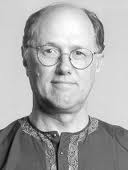Are we living in a Holoverse?
by George Wolfe
Recently I watched the You Tube video of the 17th annual Isaac Asimov Memorial Debate held at the American Museum of Natural History in New York City. Neil DeGrass Tyson, who is Director of the Hayden Planetarium and who served as host for the recent 13-week television series “Cosmos: a Space-time Odyssey,” moderated the event. The topic for this year’s debate was “Is the Universe a Computer Simulation?”
More and more, I see articles appearing by noted physicists investigating the possibility that the universe in which we live is some form of holographic illusion. Much of this hypothesis has immerged from research into quantum physics and the mysterious nature of black holes. And in a recent article published in The Business Insider, author Amanda Gefter quotes cognitive scientist Donald Hoffman as supporting the illusion hypothesis from the point of view of artificial intelligence and evolutionary game theory.
The physicist who first proposed using the hologram as a metaphor for understanding the universe was David Bohm, a quantum physicist who was an associate of Albert Einstein. Bohm referred to the cosmos as a “Holoverse.” Two physicists who have revived this idea, only approaching it very differently from what has been revealed through the study of black holes, are Stanford University physicist Leonard Susskind and Dutch physicist Gerald t’Hooft.
The thought behind this current “holographic principle” is the idea that black holes are actually two dimensional and that the laws of physics can be explained in a reality that is comprised of only two dimensions. Black holes may not have a third dimension of depth. Rather, their structure or nature, as explained by science writer Bec Crew, might be more like water absorbing information, or like a basketball hoop whose net is tied up flat under the ring, but when the ball enters, it seems to disappear.
Susskind, in his book with the amusing title The Black Hole War: My Battle with Stephen Hawking to Make the World Safe for Quantum Mechanics, even suggests that the we might be living in an “inside-out black hole.”
The computer simulation model is based on the idea that, if the universe can be explained entirely through mathematics, then the universe is essentially algorithmic and can be programmed. This algorithmic model provokes us into a discussion of intelligence since we refer to algorithmic code that enables computers to “learn” and adapt to changing input (such as occurs when your “smart phone” takes an “educated guess” at correcting the word you misspelled) as exhibiting “artificial intelligence.”
In listening to this year’s Isaac Asimov debate, I was amazed at how the discussion momentarily turned theological and to the subject of consciousness. For panel member James Gates, theoretical physicist at the Univ. of Maryland, the universe is “an Extraordinary Mystery.” David Chalmers, a professor of Philosophy at New York University, even suggested that, if the universe is a simulation, the programmer might be thought of as a “naturalistic God,” that is, an intelligence that creates this simulation but leaves our ethical decisions and ultimately our destiny as a human race collectively up to us.
In addition, Dr. Michio Kaku, a theoretical physicist at the City College of New York (CUNY) and co-founder of String Field Theory (who was not on the Asimov panel), states in an article published in the Geophilosophical Association of Anthropological and Cultural Studies that “I have concluded that we are in a world made by rules created by an intelligence.”
What fascinates me about such discussions is that these scientists, philosophers and mathematicians from schools like Harvard, MIT, and New York University do not see such topics as off limits to their disciplines. Perhaps we have at last reached the historical moment, described 2500 years ago by the Taoist Philosopher Chuang Tzu when he wrote: “Someday there will be a great awakening when we know that this is all a great dream.”
George Wolfe is Professor Emeritus at Ball State University and former Director and Coordinator of Outreach Programs for the Ball State University Center for Peace and Conflict Studies. He also chairs the Muncie Interfaith Fellowship, is a trained mediator, and is the author of Meditations on Mystery: Science, Paradox and Contemplative Spirituality.



